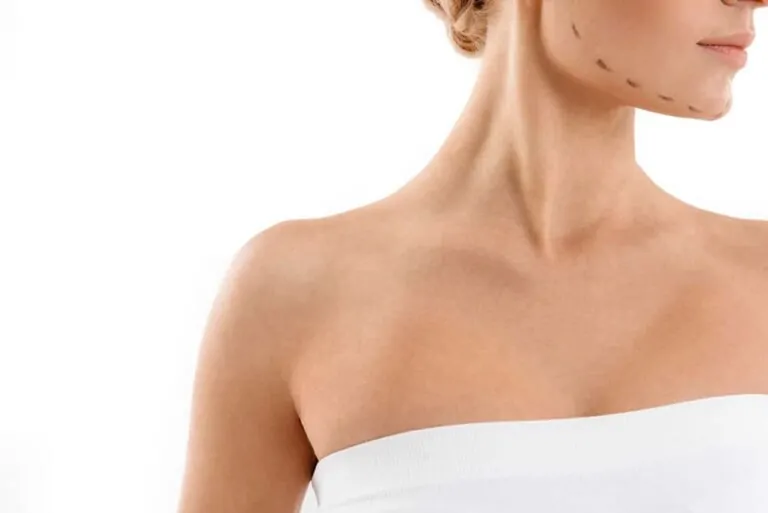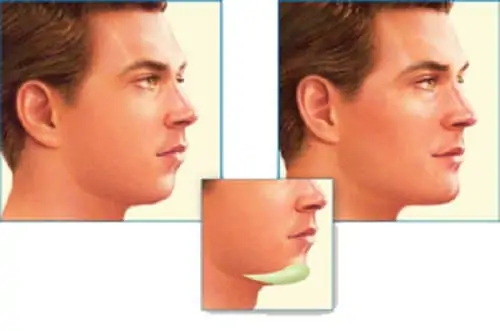 Chin aesthetics refers to both surgical and non-surgical procedures that aim to enhance the appearance of the chin and jawline. These treatments are commonly sought by individuals with underdeveloped or overly prominent chins to achieve a more harmonious facial profile.
Chin aesthetics refers to both surgical and non-surgical procedures that aim to enhance the appearance of the chin and jawline. These treatments are commonly sought by individuals with underdeveloped or overly prominent chins to achieve a more harmonious facial profile.
Thanks to advancements in aesthetic medicine, it is now possible to enhance the jawline definition and add volume to the chin tip. However, defining a perfect chin is subjective and should be tailored to each individual’s facial structure. A personalized approach ensures the chin aligns with the overall facial proportions.
What Is Chin Aesthetics?
Chin aesthetics includes various procedures designed to harmonize the chin with other facial features. Understanding the patient’s expectations and analyzing their chin structure are essential prior to any procedure. The chin should be assessed alongside other anatomical structures such as the lips and nose.
Correcting chin imperfections can enhance not only the jawline but also the aesthetic appeal of the lips, nose, and overall facial balance. A holistic assessment of the face is vital to achieve a natural and pleasing result.
A skilled plastic surgeon will plan the most appropriate techniques based on the patient’s facial anatomy. Surgical approaches may include bone reshaping, chin implants, or fat grafting. Post-operative care and adherence to the surgeon’s instructions are crucial for optimal recovery and aesthetic results.
Who Is a Good Candidate for Chin Aesthetics?
Chin aesthetics is generally suitable for individuals with a healthy physical condition and realistic expectations. Detailed consultations are conducted to tailor a treatment plan that addresses the patient’s needs.
Common aesthetic concerns include:
- Small Chin: May be treated with dermal fillers, fat grafting, or implants.
- Protruding Chin: Typically corrected through bone shaving or surgical reduction.
- Recessed Chin: Enhanced with fillers, fat injections, or chin implants.
- Weak Lateral Chin Bones: Can be corrected with symmetrical fillers or implants.
- Square Chin: May be refined using botox for masseter muscles or bone contouring procedures.
How Is Chin Aesthetics Performed?
Several methods can be employed depending on the concern:
Botox Injections
Used to reduce the size of the masseter muscle, softening the jawline and creating a more heart-shaped face.
Dermal Fillers
Applied to enhance the projection and shape of the chin. Common materials include hyaluronic acid and calcium hydroxyapatite. Longevity varies from 12–18 months to 4–5 years depending on the product used.
Fat Grafting
Recommended for patients seeking permanent results. Fat is harvested via liposuction from another body area, processed, and injected into the chin. About 60% of the transferred fat is typically retained, with full results visible at three months.
Chin Implants (Prosthesis)
Ideal for significantly underdeveloped chins. Custom-sized silicone implants are inserted via intraoral incisions under local or general anesthesia. Healing requires good oral hygiene and typically leaves no visible scars.
Orthognathic Surgery
Used when the lower jawbone is excessively forward or backward. This involves cutting and repositioning the bone and is considered for more severe cases.
 Recovery Process After Chin Aesthetics
Recovery Process After Chin Aesthetics
Recovery depends on the chosen technique:
- Fillers and Botox: Minimal downtime. Patients can resume daily activities immediately.
- Fat Grafting and Implants: Mild swelling and bruising may occur. Full healing typically takes a few weeks.
- Surgical Bone Procedures: May require hospitalization for 1–2 days and a soft diet for several days. Healing time can extend up to two weeks.
- In most cases, patients return to normal life within 1–7 days. Since chin implants are placed through the mouth, no external scars are visible.
Cost of Chin Aesthetics
Costs vary depending on the type of procedure, materials used, and the surgeon’s experience.
- Dermal Fillers: Price depends on the brand and amount used.
- Fat Grafting: Cost varies based on whether stem cell-enriched fat is used.
- Chin Implants: Varies depending on the number, brand, anesthesia, and surgical facility.
- Orthognathic Surgery: Typically the most expensive due to the complexity and hospital stay.
Can Chin Aesthetics Change the Face Shape?
Yes. Chin aesthetics can significantly enhance the facial profile by improving symmetry and balance, leading to a more attractive appearance.
Chin Implant Surgery Candidates
Chin implant surgery is ideal for patients with weak or recessed chins. The goal is to strengthen and enhance the lower facial contour, often based on ideal facial proportions (e.g., the golden ratio).
How Is Chin Implant Surgery Performed?
Performed under local or general anesthesia, a small incision is made inside the mouth or under the chin. The implant is placed onto the bone and secured. The operation typically lasts 45–60 minutes.
Is Recovery from Chin Implant Surgery Difficult?
Patients are often discharged the same day. Mild numbness, swelling, or tenderness may occur but usually subsides within days. Gargling after meals is recommended to maintain oral hygiene.
Can Chin Asymmetry Be Corrected?
Yes. Chin asymmetry can be addressed using various surgical and non-surgical methods. Consultation with a specialist is essential for planning the appropriate solution.

